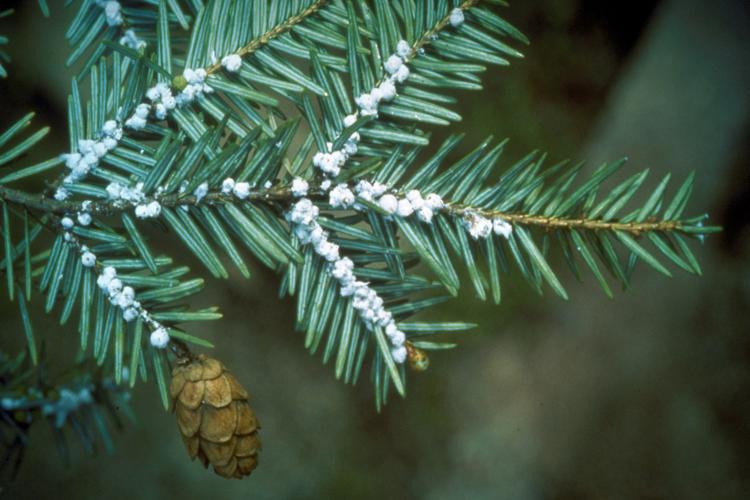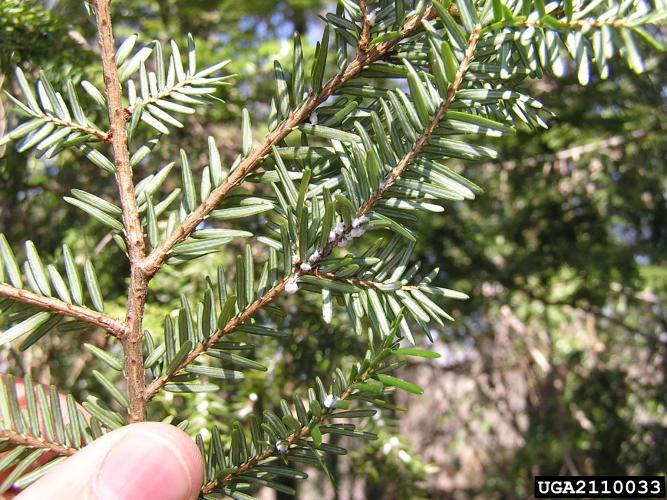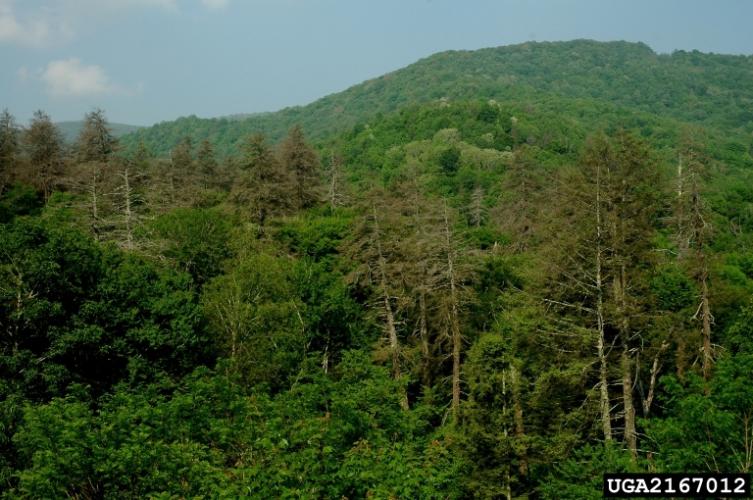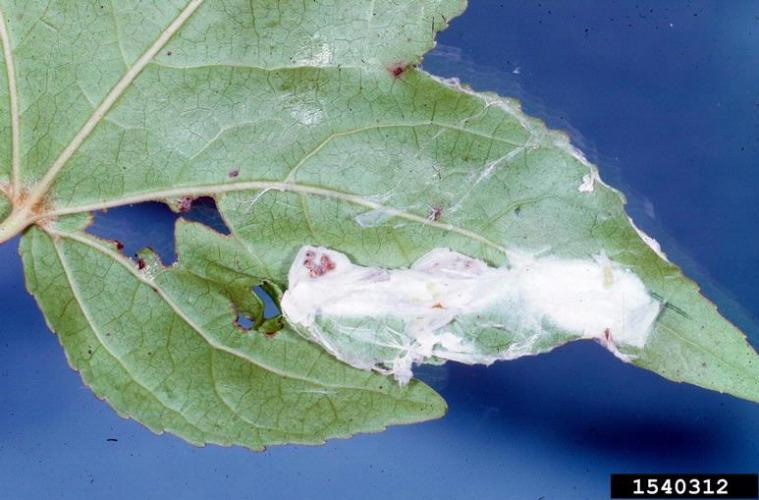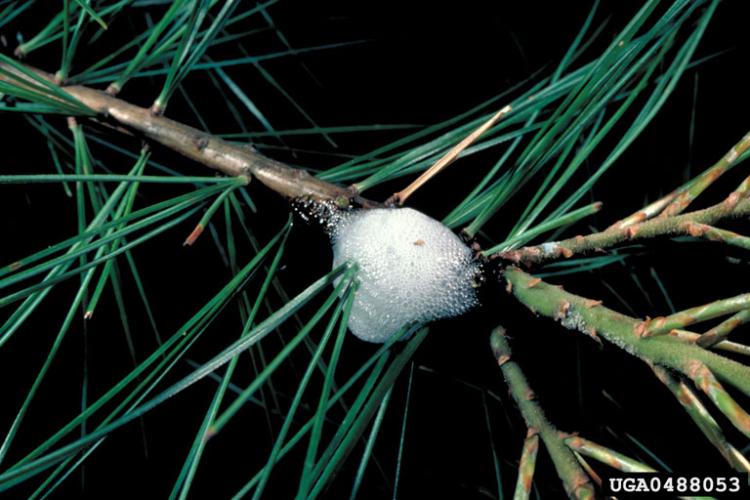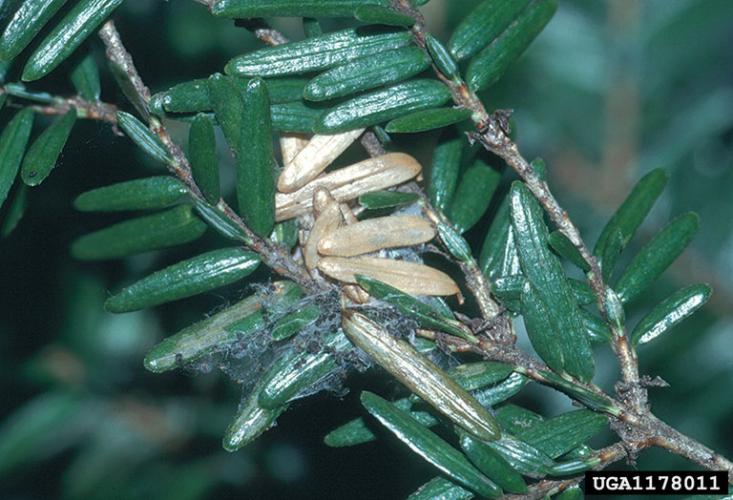Hemlock Woolly Adelgid
Identification
Hemlock woolly adelgid (HWA) is a small, aphid-like insect that feeds on hemlock species in North American. It has "wool" attached to the twig of hemlock trees, not attached to the needles. HWA is immobile when covered in wax - they are waxy, not silky or stretchy. HWA is wispy like a cotton ball and does not look painted on like pine sap.
signs and symptoms
- White, cottony balls at the base of hemlock tree needles
- Yellowing needles, needle fallout, branch dieback, and crown thinning
See image slideshow above for signs and symptoms.
Biology
Origin
The hemlock woolly adelgid (HWA), Adelges tsugae, is a tiny insect from east Asia that attacks forest and ornamental hemlock trees. HWA was introduced to the United States in the 1920s to the Pacific Northwest, and in the early 1950s to the Washington DC and Richmond, Virginia areas. Since its introduction, HWA has spread throughout the eastern United States via wind, birds, mammals, human activities, and the transport of infected nursery stock, creating an extreme amount of damage to natural stands of hemlock, specifically eastern hemlock (Tsuga canadensis) and Carolina hemlock (Tsuga caroliniana).
Life Cycle
The life cycle of HWA is complex. It involves asexual and sexual reproduction and two different host tree species. On Eastern hemlock trees, HWA produces two generations per year: a spring generation (progrediens) and a winter generation (sistens). The progrediens has two forms, a wingless form that remains on hemlock trees and a winged form (sexuparae) that searches for a suitable host spruce tree upon which it will start a sexual reproductive cycle. Each generation has six stages of development: egg, four juvenile (or nymph) stages, and adult.
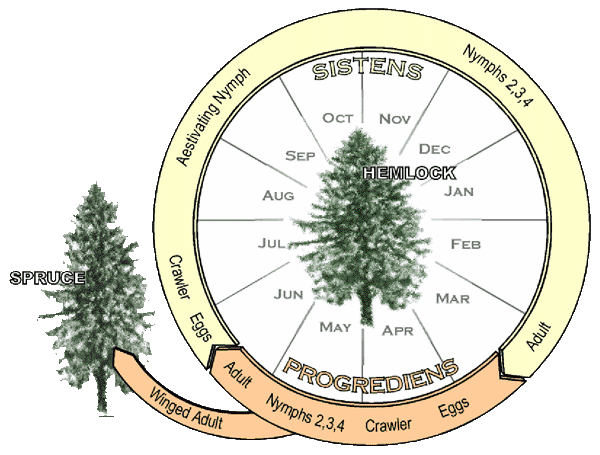
The life cycle of the HWA.
ECOLogical threat
HWA feeds on young twigs, causing needles to dry out and drop prematurely. Trees may die in four to six years. Some survive, but with sparse foliage, losing value as a shelter for wildlife and their ability to shade streams. Hemlock woolly adelgid was observed in Virginia in the early 1950’s and has now spread from Georgia to Maine. In 2007, it was found on native trees in Vermont for the first time.
Biological controls are being used to reduce the impact of hemlock woolly adelgid across the landscape. Two biological control agents have been used in Vermont: the Laricobius nigrinus beetle and the Lecanicillium muscarium fungus.
Vermont Distribution
Hemlock woolly adelgid has been confirmed in southern Vermont.
Vermont Forest Invasive Pest Status Map
Citations
Photo Credit
Connecticut Agricultural Experiment Station Archive, Connecticut Agricultural Experiment Station, Bugwood.org
James Johnson, Georgia Forestry Commission Bugwood.org
John Ghent, John Ghent, Bugwood.org
Lacy L. Hyche, Auburn University, Bugwood.org
information credit
Canadian Food Inspection Agency HWA Page
National Invasive Species Information Center
New York Invasive Species Information
